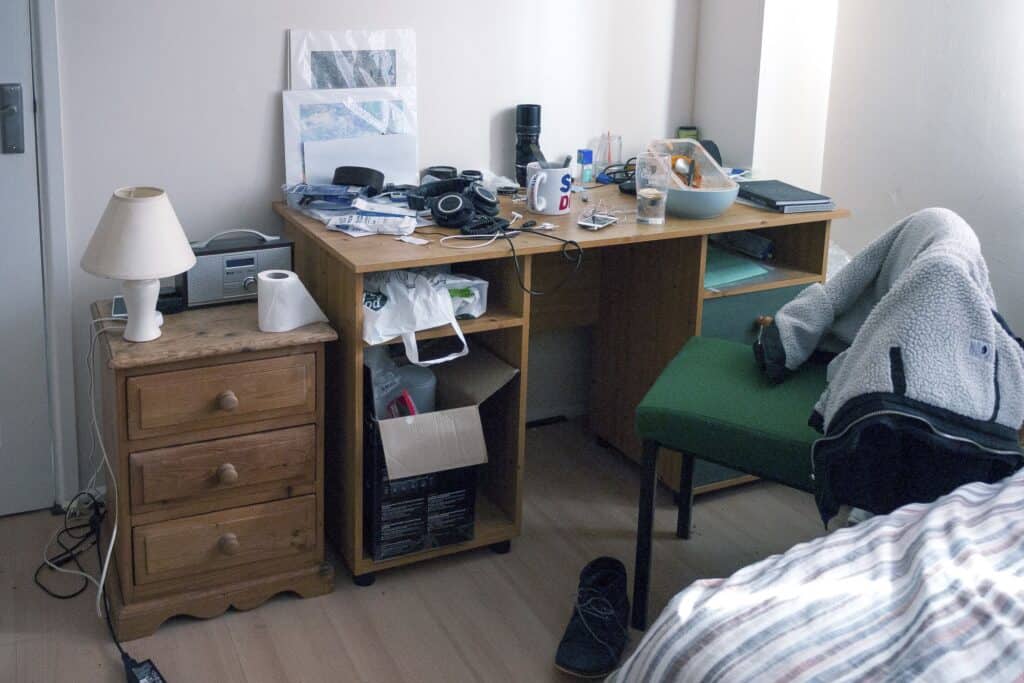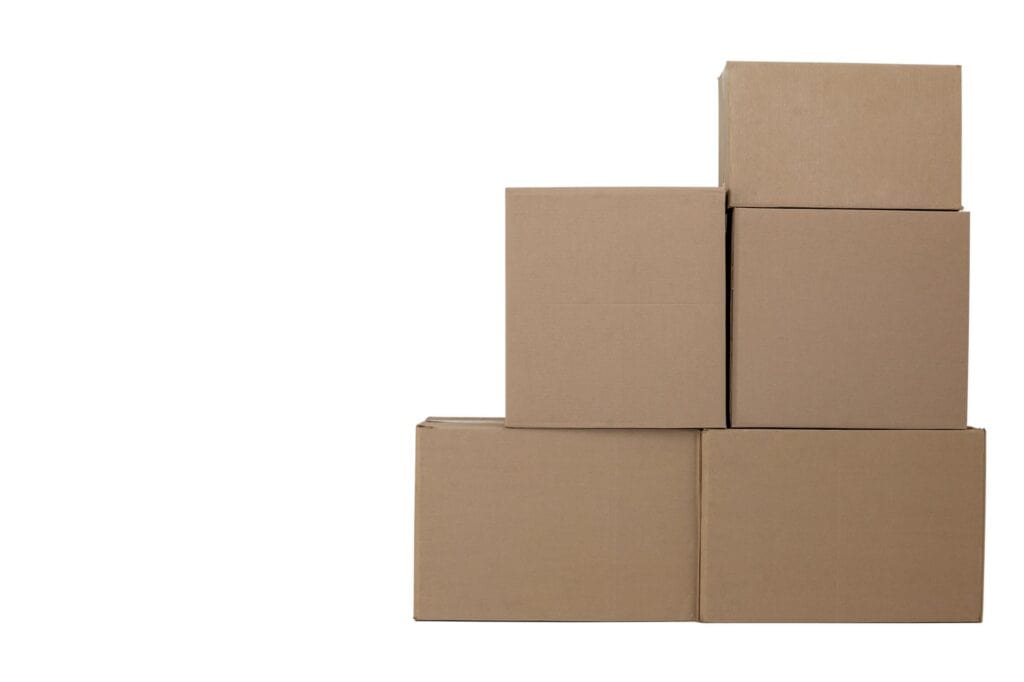Moving house? Simplify your next big move with our comprehensive guide. Learn how to plan and prepare for home removals with ease. We’ll walk you through crucial steps, proven strategies, and practical tips to manage your move without the headache. From timing and task delegations to packing and coordination with moving services, you’re on the right track to settling into your new home with less stress and no surprises.
Key Takeaways
- Developing a meticulously detailed moving plan, including assigning tasks and choosing an optimal move date, is essential for a successful and stress-free home removal experience.
- Decluttering before the move by sorting items to keep, donate, sell, or trash reduces moving costs and the environmental footprint, while high-quality packing supplies protect belongings during transit.
- Careful labelling, partnering with a reputable removals company, and coordinating important details like utilities and parking are critical steps in ensuring efficient unpacking and a smooth transition to a new home.
Crafting Your Home Removal Blueprint
The process of moving house is like conducting a symphony; every element must work in harmony, which requires a detailed blueprint. This blueprint is your strategic battle plan, a veritable checklist that will steer you through the labyrinth of the moving process with precision and ease. It’s the bedrock upon which a stress-free house removal is built, ensuring that every task is accounted for and every box ticked.
Here’s how you can lay a strong foundation for your impending move.
Establish Your Moving Date
A critical aspect of your moving plan is determining your moving date, a decision that can dramatically influence the moving costs and the availability of professional movers. Opting for an off-peak time, perhaps midweek or mid-month can yield better rates and greater flexibility.
Once your Islington move date is etched in stone, promptly inform your chosen moving company, and don’t forget to coordinate with utility companies to ensure services transition smoothly to your new property. Mark this date on your calendar as the target for all your moving milestones.
Designate Tasks and Responsibilities
The saying ‘many hands make light work’ holds significant truth during a house move. From the get-go, it’s wise to delegate responsibilities among your crew – be they family or friends. Having each person aware of their specific roles can streamline the process on the moving day. Some tasks to assign include:
- Packing precious china
- Wrangling the pets
- Loading and unloading boxes
- Directing the movers
- Cleaning the old and new house
By dividing all the tasks, you can ensure that everything gets done efficiently and smoothly.
Appoint a field marshal, someone to orchestrate the day’s events, ensuring smooth sailing from dawn till dusk. With tasks tailored to each individual’s strengths and capabilities, the collective effort will make the process smooth and efficient.
Decluttering: The First Step to a Streamlined Move
Before the movers arrive, it’s vital to declutter. It’s the act of sifting through your possessions, distinguishing the cherished from the chaff. Not only does it pave the way for a stress-free house removal, but it also saves on moving costs and time. Embrace this opportunity to part with items that no longer serve a purpose, making your new house a bastion of items that spark joy.
Moreover, donating or recycling these unwanted items benefits the environment, underscoring the positive impact of your move on a broader scale.
Sort and Dispose of Unneeded Items
To make the decluttering process smooth, adopt the 4-Box Method, a straightforward yet effective strategy. Begin sorting items early, perhaps starting with your wardrobe, sifting through and categorising each article into boxes labelled:
- keep
- donate/sell
- discard
- store
By addressing out-of-season clothing a month or so before movers arrive, you set the stage for a smooth transition to your new abode.

Securing High-Quality Packing Supplies
A key piece of advice for a successful house removal is to equip yourself with a range of high-quality packing supplies. These are the shields and armour that will guard your possessions against the tumult of transit. Start with the basics: sturdy boxes, resilient packing tape, and sharp markers are the foot soldiers in your packing army.
To safeguard your fragile and valuable items, bubble wrap and packing paper become indispensable allies. Sometimes, an extra layer of cardboard or polystyrene can be the difference between a safe arrival and an unfortunate casualty.
Choosing the Right Boxes and Containers
Picking the right box for the job is like choosing the perfect suit for an occasion – it must fit just right. Cardboard moving boxes come in a variety of shapes and sizes to accommodate everything from your hefty hardcovers to your lightweight linens. Remember, heavy items fare better in smaller boxes, while lighter, bulkier ones can brave the larger containers. Choose wisely to ensure the safety of your belongings.
Wrapping Essentials: Bubble Wrap and Packing Paper
When it comes to wrapping essentials, bubble wrap is your best friend, especially for those items that need a gentle embrace during transport. Individual wrapping with quality materials, cushioned with layers in between, is the key to preserving your fragile treasures.
While bubble wrap reigns supreme, don’t shy away from using household alternatives like linens or newspapers to fill empty spaces and provide added protection. With these wrapping essentials, you’ll ensure that your valuables remain intact on their journey to your new home.
Labelling Strategy for Efficient Unpacking
A comprehensive labelling strategy guides you during the unpacking process. Imagine being able to pinpoint exactly where each box should go and what treasures it holds within – a surefire way to a seamless transition. Clear labels on each side of the box ensure that no matter how they’re stacked, you’ll always be able to identify their contents at a glance.
Clear labels on each side of the box ensure that no matter how they’re stacked, you’ll always be able to identify their contents …
For those boxes carrying your most delicate items or hazardous materials, mark them with handling instructions to ensure they’re treated with the care they deserve.
Room-by-Room Labelling System
Dive into the details with a room-by-room labelling system, amped up by the clever use of colour coding. By packing one room at a time and tagging each box with a distinct colour, you streamline your entire moving process. This method not only aids the movers in placing boxes in their correct locations but also speeds up your unpacking, allowing you to settle into your new home with ease.
Partnering with a Professional Removals Company
A professional removals company is your partner in the complex task of moving in Islington. With their expertise, the daunting task of transferring your life’s possessions becomes a coordinated endeavour. To mitigate the moving day mayhem, Quicksilver comes highly recommended for its reliable service.
For families, enlisting professional movers allows for a focus on the children and pets, ensuring they’re attended to with the care they need. Remember, the right removal team can make all the difference in achieving a successful house removal, and that’s where house removals services come into play.
Evaluating Removal Companies
Evaluating potential removal companies must be done with a discerning eye. Seek out those with accolades – a sign they’ve passed rigorous assessments. Estimates should provide a clear breakdown of all costs, from insurance to packing to mileage, giving you a transparent picture of the total moving costs.
An in-person estimate, ideally obtained from multiple companies 4 to 6 weeks before your move, is the best way to ensure an accurate quote and ample preparation time.
Understanding All-Inclusive Moving Services
When evaluating your chosen removal company, understanding the breadth of their all-inclusive moving services is key. Such services often encompass packing, transportation, and insurance coverage, ensuring a stress-free house removal from start to finish. Verify the insurance details, knowing the time limits for claims and specific packing requirements for high-value items will give you peace of mind as you hand over your belongings to the movers.
Preparing Fragile and Valuable Belongings
Your fragile and valuable belongings require special care during the move. Wrap each piece with the utmost care, using high-quality packing materials like bubble wrap and tissue paper to provide a secure buffer against the bumps and jostles of the journey. For those items with a penchant for sticking, such as paintings, start with a layer of non-stick material to prevent any unwanted adhesion.
A detailed inventory, perhaps assisted by a home inventory app, can help track these items and ensure they arrive at your new house in pristine condition.
Custom Packing for Delicate Items
Custom packing for delicate items is akin to crafting a tailored suit – it’s all about the perfect fit. Layering your fragile items with bubble wrap and packing paper provides the necessary cushioning they need. For glassware and similar items, individual wrapping is the name of the game, ensuring they remain insulated and immobile within their boxes.
TIP
When it comes to larger delicate pieces, like mirrors or artworks, oversized bubble wrap options offer the enhanced protection these special items require. And don’t forget electronics and artwork which may need specialised containers or crates for the safest transport.
Organising Essential Items for Immediate Access
As moving day approaches, having essential items readily accessible will be invaluable. It’s about having a go-to bag packed with essentials like toiletries, a change of clothes, and bedding, ensuring comfort during the first few days in your new home.
This step is about planning ahead and staying organised, so you’re not left scrambling for necessities amidst a sea of boxes.
Personal Essentials Bag
The contents of your personal essentials bag should reflect your immediate needs. Think of it as your survival kit and include:
- Important documents like birth certificates and passports
- Medications
- Chargers
- A change of clothes
- Toiletries to stay fresh during the move
- Basics like a roll of toilet paper, snacks, and water
By keeping these items within arm’s reach, you ensure a smooth transition to your new abode.
Navigating Legalities and Logistics
Detailed planning involves more than boxes and bubble wrap; it also includes addressing the legal and logistical aspects of moving house. Addressing these aspects early on, such as:
- Obtaining necessary permits from your local council
- Parking permits
- Elevator reservations
- Removals insurance
Staying organised can save you from last-minute headaches and potential fines, and even help you save money. It’s about ensuring every i is dotted and every t is crossed.
This due diligence not only facilitates a smooth move but also serves as a bulwark against future disputes or legal hassles.
Parking Permits and Elevator Reservations
Securing parking permits and making elevator reservations might seem like minor details, but they’re crucial components of a smooth moving day. Parking dispensations and suspensions ensure the removal vehicle has the necessary space to unload, and knowing the notice period required is essential for planning.
Remember, these are provisions for essential moving works, not mere conveniences, so approach them with the seriousness they warrant.
Coordinating with Utility Companies
In the lead-up to your Islington move, liaising with utility companies should be a priority. This involves identifying your current providers, compiling account details, and setting dates for service termination at your old address and initiation at your new one.
Don’t forget to confirm all arrangements a few days before the move to ensure you have power, water, and heating ready and waiting to welcome you to your new home.
Final Meter Readings
Final meter readings for utilities like gas, electricity, and water are the closing chapters of your utility management. Scheduling these readings just before moving day draws a clear line between your responsibility and that of the next occupant. Keep copies of these readings for your records; they are proof of your final usage and will help ensure that your final bills are accurate.
Special Considerations for Pets and Children

Moving can be especially stressful for pets and children; prioritising their comfort and security is essential. Consider hiring a pet sitter or babysitter, or arranging for daycare on moving day. Prepare separate essentials bags for your little ones and furry friends, filled with favourite toys, snacks, and overnight necessities.
Keeping routines as normal as possible will help ease the transition for children, while familiar comfort items can help reduce stress for pets during the move.
Final Walk-Through and Handover
Ensure you conduct a comprehensive final walk-through before leaving your old home. This is your chance to ensure that all repairs have been made, appliances are functioning, and the home is in the condition agreed upon. Check every nook and cranny, including the backyard and any outbuildings, to ensure nothing is amiss. Keep an eye out for signs of pests, as well, to avoid any surprises for the new occupants.
Finalising the handover by ensuring all keys are accounted for marks the end of your responsibilities and the beginning of your new chapter.
Checking Every Room
The last sweep through your home is a critical step. Go room by room, opening every cupboard and looking in every closet, to ensure no item is left behind. It’s easy to forget a piece of furniture or a box in the hustle and bustle of moving day, so communicate with your movers to confirm pick-up times for all items.
This thorough check minimises the risk of leaving behind something you’ll miss later.
Packing Timeline: Countdown to Moving Day
Following a packing timeline can help maintain order and reduce stress as moving day nears. A systematic approach, starting with non-essential items and progressing to daily necessities, ensures that everything is packed in an orderly and manageable way. Here is a suggested packing timeline:
- Begin with rarely used rooms and items in storage.
- Move on to books and home decor.
- Pack the kitchen.
- Pack clothing.
By following this timeline, you can stay organised and make the moving process more efficient.
This countdown method helps you keep track of what’s packed and what’s left, allowing for a smooth transition to your new home.
Starting Early with Non-Essential Items
Start packing with items that you won’t need in the immediate future. This could include seasonal decorations, special-occasion dinnerware, and off-season apparel. By tackling these non-essentials around three weeks before the movers arrive, you reduce the stress of last-minute packing and ensure that you have time to handle your belongings with care.
This strategic starting point allows you to gradually work your way through your home, culminating in the packing of essentials in the days just prior to moving day.
Summary
In conclusion, moving house can be a journey filled with excitement and opportunity, provided you have the right map to guide you. From crafting a detailed plan to partnering with a reputable removals company, each step you take is a stride towards a successful house removal. Remember to declutter, invest in quality packing supplies, and keep essential items accessible. With careful planning, coordination, and a sprinkle of patience, your moving day can transition from a potential ordeal into an organised, stress-free experience. Embrace the adventure, and may your new home be everything you’ve hoped for and more!
Frequently Asked Questions
When should I start packing for my move?
You should start packing non-essential items about three weeks before your moving date, beginning with infrequently used items and gradually progressing to daily-use items as the move date approaches. This will help ensure a more organised and less stressful move.
How do I choose the right removals company?
Choose a removals company with accreditations, obtain in-person estimates, read reviews, and ensure they provide a detailed breakdown of all costs, including insurance, packing, and transportation, to make an informed decision.
What items should I include in my personal essentials bag?
Include important documents, prescription medications, toiletries, a change of clothes, electronics and chargers, keys, basic snacks, water, and a roll of toilet paper for immediate access during the move. These items will cover your essential needs during the move without overwhelming your bag.
Do I need to secure parking permits for moving day?
Yes, it is important to secure parking permits and any necessary reservations for moving day to avoid any potential issues. Contact your local council well in advance to arrange these permits.
How can I make moving easier for my pets and children?
To make moving easier for your pets and children, arrange for a babysitter, pet sitter, or daycare during the move, prepare separate essentials bags for each, and maintain routines as much as possible. This will help reduce stress and make the transition smoother.








